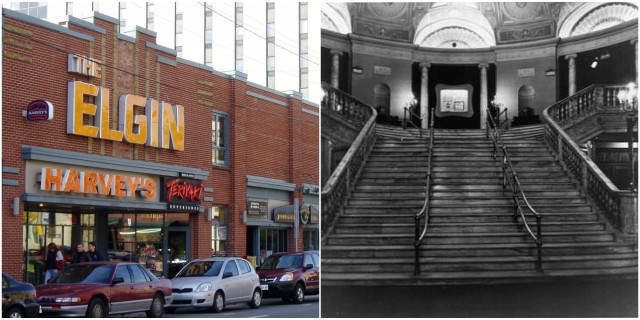When we did our research for all the abandoned and demolished cinemas across Canada, we couldn’t believe how many were there. That’s why we decided to cover the subject in 3 separate articles, discussing what we considered as the most important film theaters in the country. In the two previous articles, we talked separately about the former cinemas of Toronto and Montreal, which shaped those cities’ film culture.
And in this last one, we are looking across Canada, pinpointing those that paved the way for the new modern multiplex cinema.
The Elgin Theatre
For a long time, the Elgin Theatre was one of Ottawa’s major venues where people went to experience the magic of cinema. Today, the building of this once-glorious theater is filled with all kinds of diners and restaurants.
Named after the street where it stands, the Elgin was owned by 20th Century Theatre’s Nat Taylor, the man who is widely known as the inventor of the multiplex. In 1947, ten years after the theater opened, Elgin became a dual screen cinema, and at the time it was only the second, behind Toronto’s Hollywood Theatre.
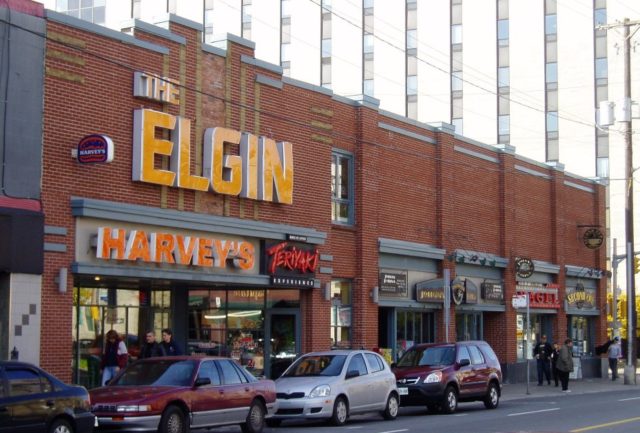
And for the next 50 years, the Elgin would have one screen that would only show newly released films, while the second was reserved for movies on a rerun.
But, in 1994, everything came to an end. Famous Players, the cinema chain that at the time managed the Elgin, decided that the theater could no longer compete with the new modern cinema, declaring it obsolete. The theater closed in November, with a showing of the Robert Redford film, Quiz Show.
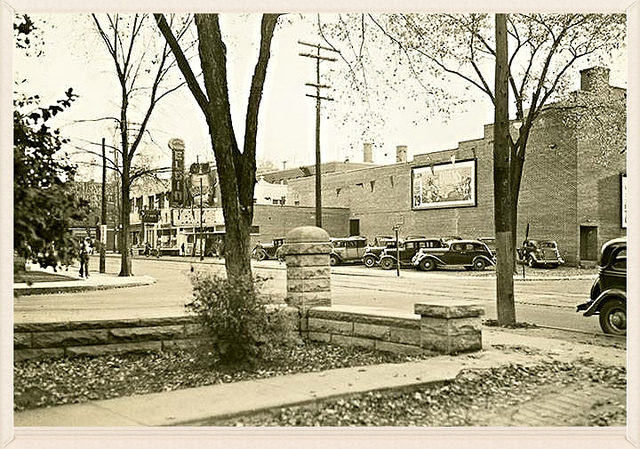
The Pantages Theatre
Abandoned since 1994 and built in 1907, the Pantages Theatre was included in the 2009 top 10 most endangered places by the Heritage Canada National Trust, after a proposal for the theater’s restoration was denied by the City Council of Vancouver.
During its golden years, and even before it was transformed into a movie theater, Pantages was one of the best vaudeville palaces in the country, and one of 70 owned by Alexander Pantages, built all over North America. Stars like Harry Houdini, Fatty Arbuckle, and Charlie Chaplin, while he was still a vaudeville act, performed their act on the stage at one time or another.
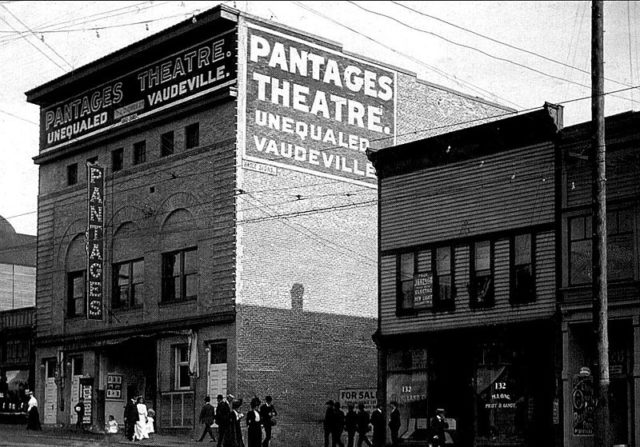
But after years of being forsaken, left to deteriorate, and neglected by the city of Vancouver, the site was put up for sale. And in 2011, the building was scheduled for demolition. In a matter of minutes, an important piece of Vancouver’s history was gone, and the place, where Pantages used to stand on the corner of Main and Hastings street still remains empty, with no new plans for redevelopment.
Capitol Cinema
For this last one, we are going back to Ottawa, Ontario once again, to talk about, what is probably the most important film theater ever built in Canada.
For 50 years, from 1920 until 1970, Capitol Cinema was the center of Ottawa’s cultural life. And to this day, it is considered the one and only movie palace and also the biggest the town has ever seen. We can only imagine what it was like in the 1930s and 1940s, at the height of Hollywood’s Golden Age of cinema, with its grand staircase, opulent lobby, and enormous 2,530-seat auditorium.
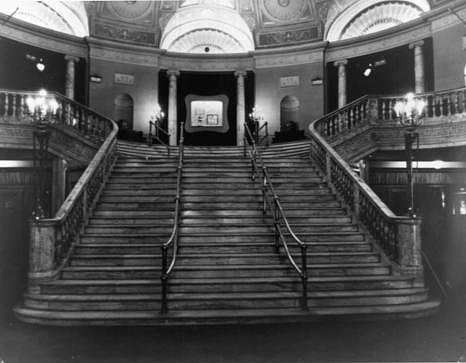
There is no doubt that the Capitol was not just the largest, but also one of the most architecturally beautiful movie theaters in all of North America. The man who designed the building was Thomas White Lamb, who was considered one of the leading theater architects of the 20th century. And the venue wasn’t just limited to showing films. It also hosted many vaudevilles, live variety acts, plays and concerts, besides the regular gala premieres of the newest movies.
Originally owned by Loews Theatres in 1929, the palace became part of the Famous Players cinema chain, who ran it until the very end.
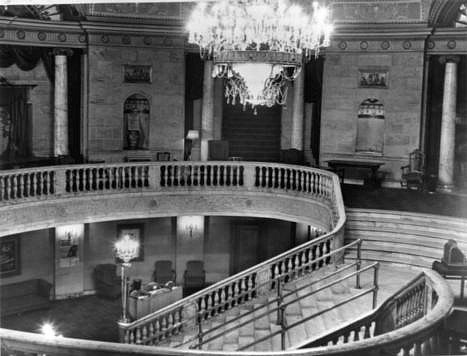
In the end, the biggest enemy of the Capitol proved to be time, and nothing more. With the start of the TV era, the crowd at the theater diminished and, later on, in the 1960s, the new multiplex theatres took over, and the Capitol simply couldn’t handle the competition.
On Thursday night, 30 April 1970, the projector flickered its lights for the final time, with a showing of Robert Altman’s critically acclaimed movie, MASH. And this grand movie palace closed its curtains for good.
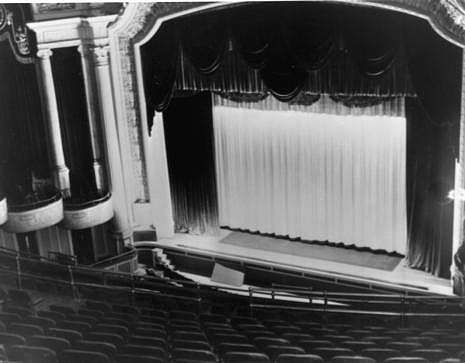
But the biggest tragedy was not the closure of the theater. Not long after it was shut, the government of Ontario approved the building’s demolition, and one of the most gorgeous buildings in all of Canada was destroyed
Today, at the intersection of Queen and Bank Street, stands an office building as a painful reminder of the beautiful structure that stood there 47 years ago.
